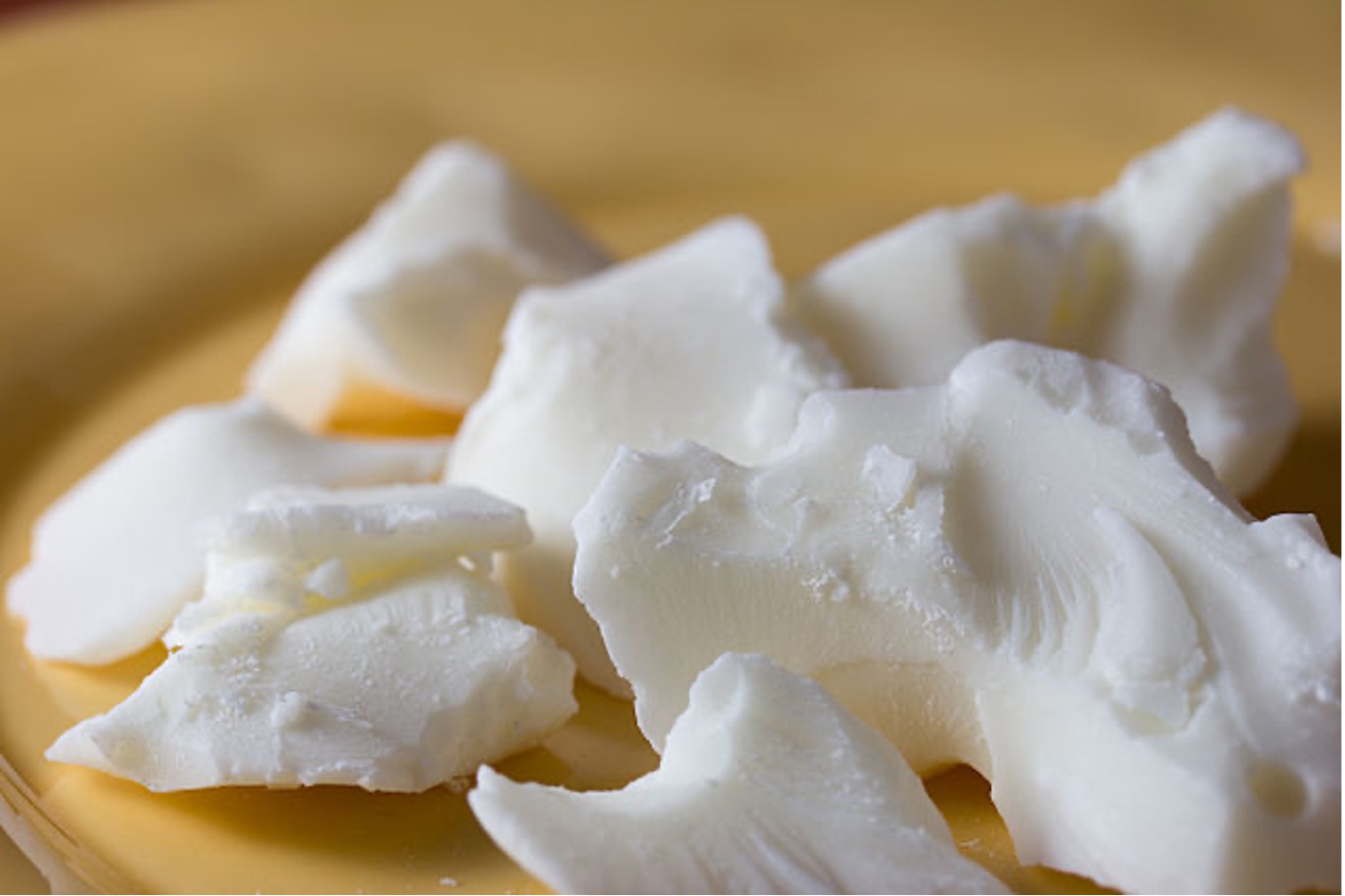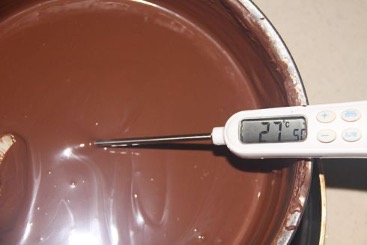Do you think chocolate is far from nanotechnologies? You're mistaken. Today, we'll reveal what chocolate has in common with nanotechnologies and why when chocolate melts in the sun and then solidifies again, it's not as good as before. The thing is, the process of producing delicious, high-quality chocolate is largely a chemical matter. It involves concepts such as crystal formation and melting point, which are extensively studied at the Center for Sustainable Nanotechnology (CSN).

The Taste of Chocolate Depends on Molecular Arrangement
Chocolate is a mixture of fat from cocoa beans, known as cocoa butter, and sugar referred to as cocoa mass. Cocoa butter is polymorphic, meaning the substance can exist in several different crystalline forms (in this case, six!). These six different polymorphs are labeled from I to VI based on their stability and physical properties. Their chemical composition is exactly the same; the only difference lies in the arrangement of lipid (fat) molecules.

Sample of cocoa butter – in this state, it doesn't look like butter or chocolate! (Photo: Veganbaking.net)
The most preferred type of cocoa butter is polymorph V. It melts at human body temperature but not at lower temperatures; this means it will dissolve in your mouth but not in your hand! It's glossy, firm, and snaps nicely when broken. The process of creating this polymorph during chocolate production requires very slow cooling of melted ingredients. This clever temperature control process is known as tempering. Slow cooling gives lipids time to arrange themselves in the most energetically favorable configuration. The result is strength as well as smoothness.
The fine texture arises from the dense, organized packing of molecules in the butter. The manner in which molecules are arranged is referred to as crystallinity. The crystalline arrangement of polymorph V in cocoa butter is remarkably regular, and its creation takes time – hence the importance of slow cooling of melted cocoa butter to allow molecules enough time to arrange tightly.
How the Crystallization Process Works
We can approximate the crystallization process like this: imagine you are in a room with 99 other people. If you were instructed to form a formation of ten by ten people with even spacing in just a few seconds, it would be a very challenging task! The result would be clusters of people in some parts of the room, and emptiness in others. However, if you had several minutes to fulfill the task, creating the given formation wouldn't be a problem.

Imagine if all the people in the picture had to form some organized arrangement. How long do you think it would take? (Photo: James Cridland)
Properly arranged crystals not only have a fine and smooth structure, but they are also very stable and won't melt easily. Breaking intermolecular bonds requires a large amount of energy. During tempering, as the temperature rises, less organized polymorphs of cocoa butter melt, but polymorph V, the ordered crystal you want to preserve, remains solid. During subsequent cooling, the melted cocoa butter molecules can attach to existing polymorph V crystals. With enough time for cooling, all fat molecules can integrate into the organized structure represented by the delightful crystalline structure of polymorph V.
The sugar contained in chocolate is referred to as cocoa mass and is hydrophilic, meaning it likes water. In contrast, cocoa butter is hydrophobic, meaning it doesn't like water. As a result, these two substances behave like oil and water – they don't want to mix. The key to preparing quality chocolate is to let the liquid chocolate solidify in a way that allows the cocoa butter fat molecules to arrange themselves with cocoa mass molecules into an energetically favorable, solid crystalline structure, not a weak and amorphous (random) structure.

Cocoa mass (Photo: norikunny)
Why Is Melted Chocolate Not Good?
Have you ever had the experience of high-quality chocolate melting in your car or bag? If you let it solidify in the fridge or freezer afterward, it's very likely it wasn't as good as before. This only reaffirms the importance of tempering for creating quality chocolate crystals! In the chemical composition of cocoa butter, there's no difference between "cheap" and "gourmet" chocolate; the difference lies in the arrangement of their molecules. And this molecular arrangement depends on the speed of heating and cooling.

Key to creating quality chocolate crystals is melting low-quality crystals with care and then slowly cooling the mixture. (Photo: Roozitaa)
Cocoa butter, the main fat component of chocolate, consists of lipid molecules. Many researchers study phospholipid bilayers, which are used to mimic bacterial or animal cell membranes. Just as the arrangement of cocoa butter molecules can change the properties of chocolate, the arrangement of phospholipids affects the properties of lipid bilayers. Nanotechnologists around the world investigate how the arrangement of phospholipids can influence interactions between cell membrane models and nanomaterials, and vice versa. You can find more detailed information on this topic in these excellent contributions by Lisy Jacob and Erica Melby.
Moreover, many nanomaterials studied by nanotechnologists are crystalline. This means the atoms of nanomaterials have a specific structure and aren't randomly arranged. For some of our materials, the appropriate crystalline structure is achieved through synthesis at precise temperatures – similar to the ideal polymorph of chocolate during tempering. The degree of crystallinity of chocolate affects its properties, including texture, melting point, and especially taste. Similarly, the degree of crystallinity affects the properties of our nanomaterials, making it exceptionally important for us to maintain consistent crystalline structures during the production of individual batches of nanomaterials. (Unfortunately, none of our nanomaterials are used in food, so we can't assess their taste.) For more information about crystalline structure and nanomaterials, check out older contributions by Alex Bryant and Cathy Murphy.

